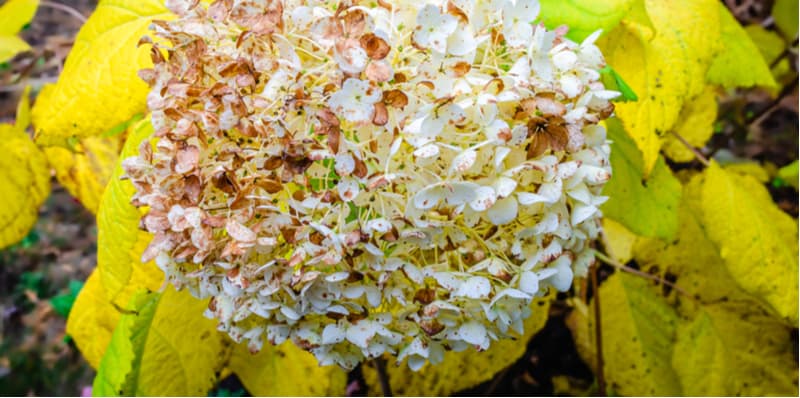The Single Strategy To Use For Hydrangea Leaves Turning Yellow
Table of ContentsAn Unbiased View of Hydrangea Leaves Turning YellowThe Ultimate Guide To Hydrangea Leaves Turning YellowUnknown Facts About Hydrangea Leaves Turning YellowThe smart Trick of Hydrangea Leaves Turning Yellow That Nobody is Talking AboutEverything about Hydrangea Leaves Turning YellowTop Guidelines Of Hydrangea Leaves Turning Yellow
The container must be big enough so the plant can expand and obtain all of the water and nutrients it requires. Panicles love the full sun.No matter of the selection, plan ahead and make certain your plant has plenty of protection from the wind. You could hair transplant to a new place, or you might create a wind obstacle using one more plant, or fence.
Decorative lawn, Rose of Sharon, or Holly bushes are simply a couple of concepts of plants you might utilize to block the wind. If you need to hair transplant, find an area in your garden that is well shielded from sun and wind. Hair transplanting is finest carried out in the autumn or the spring.
10 Easy Facts About Hydrangea Leaves Turning Yellow Shown
The plants place is the most vital variable when it comes to getting recognized and appropriate development. With a little forethought on growing place and proper maintenance, you'll be able to ensure your hydrangeas!.
If Hydrangea leaves turn yellow and falls off later on, it's generally due to overwatering, as the plant can not uptake water and sheds the leaves to reduce off transpiration. Following this, Hydrangea leaves begin to droop and wilt. Since both conditions can create yellow fallen leaves, you ought to spot the difference between the overwatered and underwatered plant.
You can save the plant from yellow fallen leaves by using it the correct light and positioning. If your plant obtains yellow fallen leaves, move it to a dark location.
See This Report about Hydrangea Leaves Turning Yellow
Bear in mind, Hydrangeas are only frost tolerant in fall and winter season as they go dormant, and temperature modifications can cause yellowing leaves and brownish spots. If it obtains also warm, the sides of the fallen leaves end up being yellow, transform brown and create a crispy appearance. Move your potted Hydrangeas away from drafty north-facing windows in the winter.
Heavy soil can conveniently obstruct the oxygen supply to the origins and sever the connection with the top components of the plant (fallen leaves). Hydrangea leaves transform their shade if they discover minor troubles in the soil structure. This issue can cause the Hydrangea delegates turn yellow, struggle with fallen leave drops, and render a saggy plant in sync with overwatering.
But, yellow fallen leaves in Hydrangeas are the initial indications of condition invasion, usually followed by black spots, browning, drops, and wilting. Isolate the diseased or pest-infested plant from the healthy plants to avoid disease spread. If it is a yard plant, eliminate all the infected fallen leaves using disinfected devices and clean up all the particles.
3 Simple Techniques For Hydrangea Leaves Turning Yellow
Avoid cutting healthy or environment-friendly leaves, and do not remove even more than 25% of the plant's foliage. Accumulate go to this web-site the disposed of leaves to melt or compost them. The main factor behind the red fallen leaves in Hydrangea is inadequate dirt or environmental problems. Hydrangea Leaves Turning Yellow. If Hydrangea fallen leaves have a white powdery substance on them, it indicates Powdery Mildew infection.
Also, repot the plant yearly in springtime or every 2 years if the development price is slow.
Get This Report about Hydrangea Leaves Turning Yellow

Each reason impacts the plant in a means that can be dealt with if we comprehend how to care for hydrangeas the ideal way. When we speak concerning inadequate light for hydrangeas, we imply that the plant isn't getting adequate sunshine.
Without adequate sunlight, the fallen leaves can turn yellow, the plant can end up being weak, and it may generate fewer blooms. To make certain a hydrangea obtains ample light, it ought to be positioned in an area where it can take pleasure in the morning light and be secured from the intense afternoon sun. Overwatering is when a hydrangea plant obtains even more water than it needs.
An Unbiased View of Hydrangea Leaves Turning Yellow

Without sufficient air, the origins can not do their work well, and the plant begins to endure. Yellow leaves may be an indicator that the plant is obtaining excessive water. On the other hand, dehydration occurs when the plant doesn't get enough water. Like people, plants need water to remain healthy and balanced.
This trouble is usual in the fall see as the weather changes or if a hydrangea is planted in a spot where it doesn't obtain sufficient heat from the sun. It is very important to understand the best conditions for hydrangeas to prevent low-temperature stress. Many hydrangeas expand finest in areas 6 to 9, where the environment is milder.
It is necessary to know that this kind of yellowing is different from the yellowing triggered by troubles like as well much water or not sufficient light. Therefore, Find Out More if the yellow fallen leaves are primarily at the bottom of the plant et cetera of the plant looks healthy and balanced, it could just imply that the leaves are just getting old.